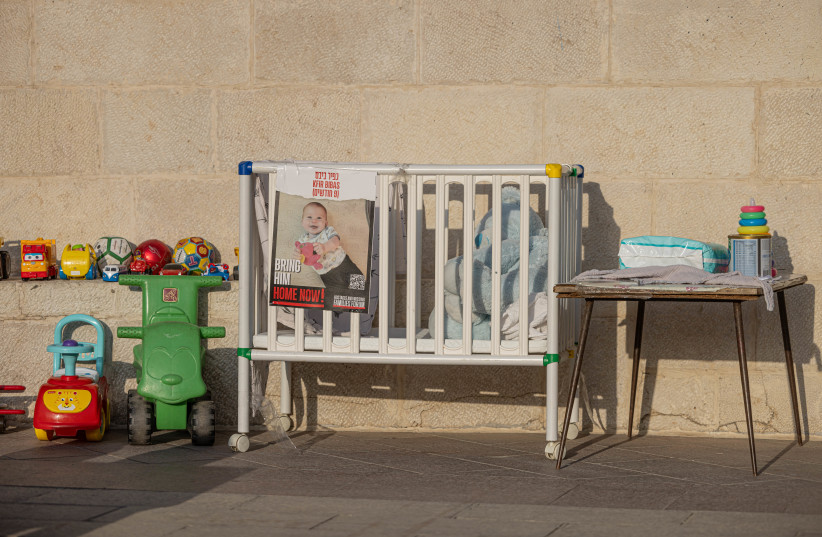Proof of the power of art to touch the depths of the heart can be found today at the entrance to the Tel Aviv Museum. In the most emotional square in Tel Aviv, art can be found at every corner: from figurines to a model of a tunnel, dozens of installations in Hostage Square do everything to instill in passers-by the need to shout and demand that the nightmare end.
These initiatives grew independently, without a direct connection to the museum, although it provided the families headquarters with gathering spaces and assistance as much as possible. The echoes of the war and the disaster of October 7 are also well felt within the Tel Aviv Museum, as well as in its plans for the coming year, which were presented at a press conference last Thursday.
Ironically, the war took hold of the Tel Aviv Museum while presenting the exhibition "Amos Gitai: Kippur, Requiem for War," on the 50th anniversary of the Yom Kippur War and following the director's famous film.
The surprise attack by Hamas put the Mossad into emergency mode. Alberto Giacomotti's exhibition was quickly dismantled. Particularly valuable pictures, by Picasso or Van Gogh for example, were quickly moved to warehouses, where they still lie waiting for peacetime. The museum itself was even closed for a few weeks.

With its reopening, the Tel Aviv Museum began to return to normal, but a little differently. Along with several exhibitions currently showing, such as the exhibition showcasing Shalom Saba's works that had been planned, the museum looks ahead and tries to steer the ship in an unpredictable era.
Planning for the future
Currently, peace is not in sight and it is difficult to plan for future exhibits. Among the challenges at hand include a decrease in income and the number of visitors, the public climate that is not necessarily free for culture, and also the cold shoulder that the international art community shows to Israel. The museum says that no artist from around the world has asked to have his works removed, but they point out that one artist, who previously exhibited at the museum, preferred that his work not be screened again now.
In the meantime, the museum is focusing inward, re-examining its role as an Israeli institution in this period. Beyond the assistance to the family headquarters in the entrance plaza, this is reflected in a variety of activities for evacuee communities in the north and south, in their temporary accommodation and accommodation in the institution itself, and in the distribution of tens of thousands of activity kits to such centers throughout the country.
At the same time, the museum announced its "healing space" initiative, within the framework of which the museum's education department is looking for ways to provide a space for art therapy, creativity and recovery for the survivors, the injured and the many victims of trauma from the disaster. This is in collaboration with the civil defense, arts schools, therapists and medical teams.
"The entrance through the Hostage Square creates a direct and open line between the general public and the museum, and the physical and emotional distance between the interior and the exterior is shrinking, and naturally, the museum's displays are all charged with additional layers of meaning," says Tanya Cohen-Uziali, CEO of the Tel Museum Aviv for Art. "
We are constantly working to initiate, assist, and ensure for the hundreds of thousands of visitors who pass through the museum's gates every year, that this iconic cultural institution will be responsive to the spirit of the times and accessible to all."
Several other exhibitions are planned at Hostage Square throughout the year.
